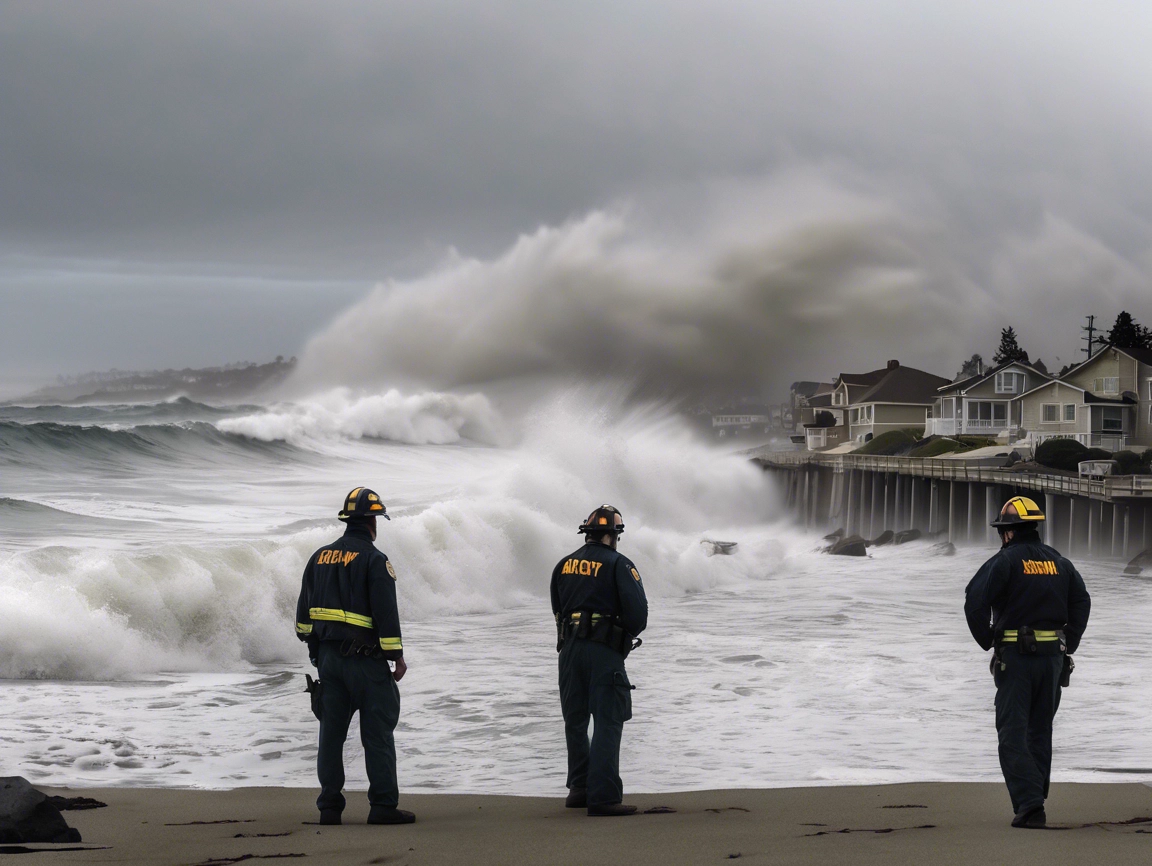Tsunami Warning in California: What Residents Need to Know in 2025
California, with its extensive coastline along the Pacific Ocean, is no stranger to natural disaster alerts, including earthquake and tsunami warnings. Recently, the state has seen heightened concern due to a tsunami warning issued for parts of the California coast, prompting questions about safety, preparedness, and the potential impact on communities. If you live near the coast or are planning a visit, understanding the current situation and how to stay safe is crucial.
Why Was a Tsunami Warning Issued?
Tsunami warnings are typically triggered by underwater earthquakes, volcanic eruptions, or landslides in or near the Pacific Ocean. These events can displace massive amounts of water, creating powerful waves that travel across the ocean at high speeds. In recent reports, the warning in California was linked to seismic activity detected near the Pacific Rim, often referred to as the “Ring of Fire,” a zone known for frequent earthquakes and volcanic activity.
The National Tsunami Warning Center (NTWC) and the U.S. Geological Survey (USGS) continuously monitor oceanic activity. When there is a credible threat, they issue alerts to local authorities, ensuring residents are notified via emergency alerts, sirens, and news broadcasts.
Areas Affected by the California Tsunami Warning
The latest tsunami warning for California has specifically impacted several coastal regions, including:
- Northern California Coast (Humboldt, Mendocino, and Del Norte counties)
- Central Coast (Monterey Bay and Santa Cruz)
- Southern California beaches (Los Angeles, Orange County, and San Diego)
While not all areas face the same level of risk, residents and visitors in low-lying coastal zones are urged to remain vigilant, especially near beaches, harbors, and river mouths where waves can be most destructive.
What Should Residents Do During a Tsunami Warning?
During any tsunami warning in California, safety should be your top priority. Officials recommend the following precautions:
- Stay Informed
Listen to updates from local authorities, emergency services, and official sources like the NTWC. Avoid relying on social media rumors. - Move to Higher Ground
If you are in a tsunami evacuation zone, move inland or to higher ground immediately. Even small tsunamis can cause dangerous flooding and strong currents. - Avoid the Shoreline
Do not attempt to watch the waves or take photos. Tsunamis can travel faster than they appear, and their waves may arrive in multiple surges over several hours. - Prepare an Emergency Kit
Keep essentials such as food, water, first-aid supplies, and important documents ready in case evacuation becomes necessary.
How to Stay Updated on Tsunami Warnings
For the most accurate and timely updates, California residents should rely on:
- National Tsunami Warning Center (NTWC) alerts
- Cal OES (California Governor’s Office of Emergency Services)
- Local emergency alert systems
- NOAA Weather Radio and official apps
These sources provide real-time information about the expected arrival time of tsunami waves, evacuation routes, and safety recommendations.
The Importance of Preparedness
Although not all tsunami warnings result in destructive waves, preparedness is key to minimizing risk. Many California cities, including San Francisco, Los Angeles, and San Diego, conduct annual tsunami drills and have mapped out evacuation routes for coastal neighborhoods. Residents should familiarize themselves with these routes and practice them with their families.
The state also encourages property owners near the coast to have flood insurance and understand their risks, as standard homeowners’ policies often do not cover flood damage caused by tsunamis.
Final Thoughts
The recent tsunami warning in California serves as a reminder of the state’s vulnerability to natural disasters and the importance of staying prepared. While not every alert results in a catastrophic event, the risk is real, especially in areas along the Pacific Coast. Staying informed, following official instructions, and preparing an emergency plan can save lives and reduce panic during such events.
For ongoing updates about tsunami warnings, alerts, and safety tips, visit the National Tsunami Warning Center and follow official California emergency channels. If you live along the coast, remain vigilant and prioritize safety during this period of heightened alert.





Nice post. I was checking continuously this bblog and I’m impressed!
Extremely helpful info specially the last part 🙂 I care for such info a lot.
I was lioking for this particular information for a very long time.
Thank you and besst of luck. http://boyarka-inform.com/